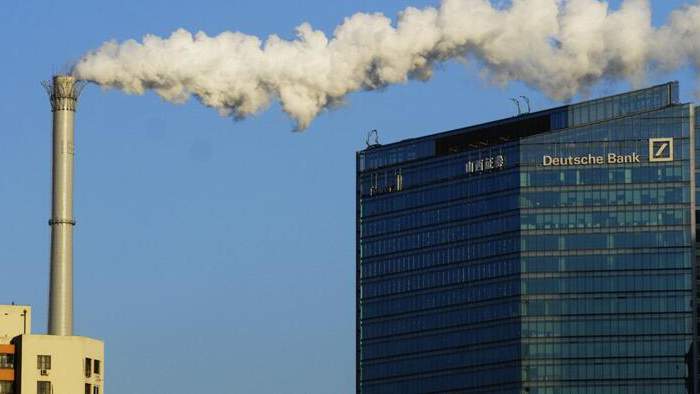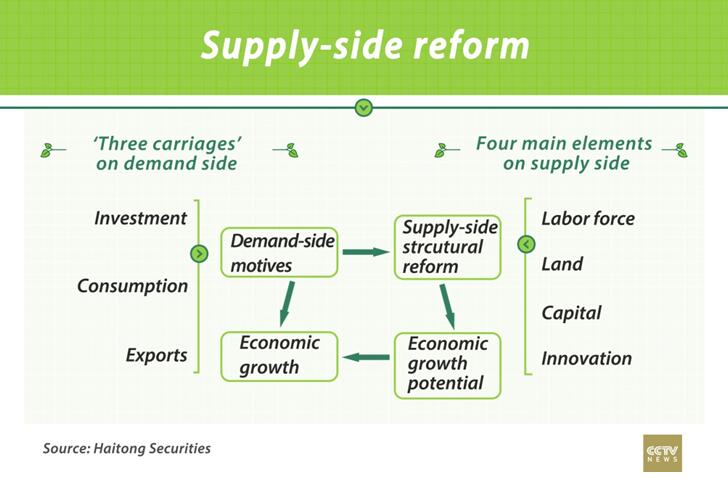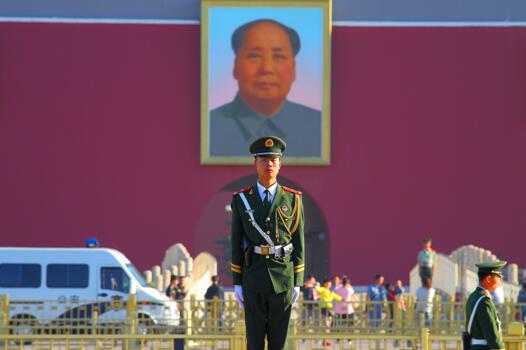
Business
09:10, 28-Dec-2016
President Xi wields supply-side reform to renew growth
Updated
10:28, 28-Jun-2018

President Xi Jinping has promised that 2017 will see China push forward with supply-side reform, an overhaul aimed at resolving structural imbalances in the economy.
Xi first acknowledged supply-side reform at the 11th meeting of the CPC Central Leading Group for Financial and Economic Affairs on November 10, 2015, and he has uttered the term numerous times in speeches this year.
While supply-side economics, better known as “Reaganomics” espoused by the 40th US president Ronald Reagan, is nothing new, China’s version has its own unique characteristics.
To fully understand the supply side, it is best to first understand the demand side.

China’s rapid economic growth over the past three decades was fueled by capital investment, exports and consumption, which are usually deemed on the demand side. However, the vigor rooted in demand stimulus tends to be impermanent.
Instead of galloping ahead on the back of demand stimulus, China’s economy has settled into a phase of slower growth that leaders have dubbed the “new normal.” While facing continued downward pressure, attending to the supply side, albeit belatedly, is expected to generate sustainable, healthy and environmentally friendly growth.
China’s supply-side reform comprises five key tasks: cutting excessive capacity, de-stocking, de-leveraging, lowering corporate costs, and shoring up the economy’s weak links. Concrete measures such as abandoning the one-child policy, cutting tax, and streamlining bureaucracy are all examples of supply-side reform.

VCG Photo
VCG Photo
The reform, initiated at the end of 2015, has progressed significantly as China’s economy held steady in 2016.
In terms of retiring excessive industrial capacity, China has “basically” achieved this year’s steel and coal capacity reduction goals, according to a State Council statement released in November.
China vowed to cut steel capacity by 45 million tons, and coal capacity by 250 million tons in 2016.
According to the National Bureau of Statistics, China’s coal outputs in the first three quarters of the year declined by 10.5 percent year on year.
Meanwhile, administrative obstacles have been widely removed. Since the revised central government pricing catalog entered into effect in January, the number of items subject to price controls has been reduced by 80 percent, thus the market, rather than the government, is playing a greater role in the economy.
Under Xi’s plan, the supply-side reform will continue unabated into 2017, aiming for tangible results in the remaining five key tasks.
(Story by Yan Qiong)

SITEMAP
Copyright © 2018 CGTN. Beijing ICP prepared NO.16065310-3
Copyright © 2018 CGTN. Beijing ICP prepared NO.16065310-3